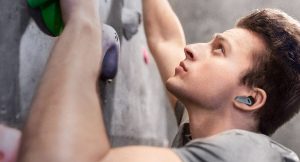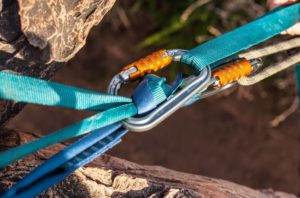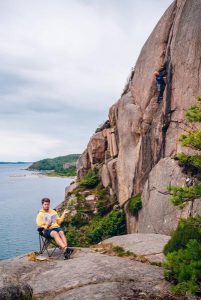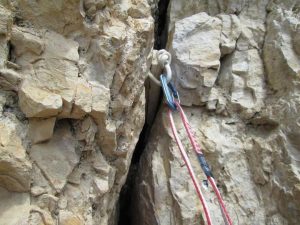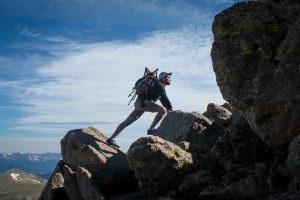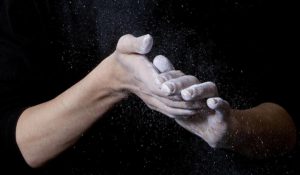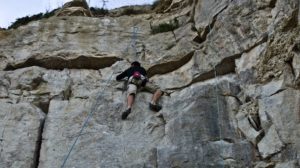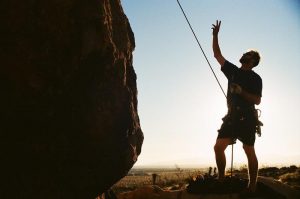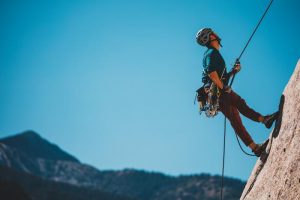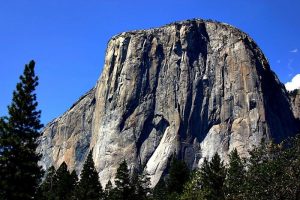When you are rock climbing, you have to bring water and other drinks. Hydration is not a big problem if you’re sport climbing or doing short routes. In those cases, you can simply bring water in a hydration pack (water bladder) or water bottles. But if you are doing a long all-day climb at sunny places like Yosemite Valley, Red Rocks, and Zion National Park then you need to figure out how much water to bring and how you are going to carry it.
Hydration Questions
A few weeks ago I climbed Solar Slab, a long easy classic route at Red Rocks outside Las Vegas. It was late October and the weather was perfect, not too hot, so the questions were: How much water do we need to bring? How much water will we actually drink? How are we going to carry water?
Gallon-a-Day Standard
Since the early days of big wall climbing in Yosemite Valley, the standard rule has been one gallon (3.78 liters) of water for each climber for each day. A gallon, however, never seems enough for a hot day. If you’re climbing El Capitan in full sun, you’re going to be thirsty even while drinking a gallon a day.
How Much Should You Drink?
Camelbak, one of the leading makers of water bladders, recommends drinking a liter or about a quart of water for every hour of outdoor activity, which includes hiking, running, bicycling, and climbing. Your personal hydration needs will vary with lots of factors, including elevation, temperature, weather, personal health, and the intensity of your activity.
The National Academy of Medicine recommended in a 2017 report that the total water intake from both liquid and food should be 2.7 liters (91 fluid ounces) for women and 3.7 liters (125 fluid ounces) for men; noting that about 20% of your daily water intake is from food. The recommendation then is the old Yosemite standard of a gallon a day.
Weather and Temperature Dictate Hydration Needs
Obviously, you are going to drink more water if you are hiking up a mountain trail with a heavy climbing pack to the crag than if you are standing at the base of a cliff belaying a top-rope climber. Weather, season, and temperature go hand-in-hand.
If it is summer and you’re in the sun, you are going to need to drink a lot more than if it’s mid-winter and you are barely breaking a sweat. Likewise, your health and body size make a difference for how much you drink. Bigger humans like men need to drink more than women to stay properly hydrated.
Base Water Intake on Your Experience
How much water you drink and how much you carry when you go climbing is up to you. Use the guideline of a gallon-a-day as a starting point. The best thing to do is base your water intake on personal experience and on the weather and your thirst. Your experience on shorter climbs will guide you toward how much fluid you need both when and where you climb. It’s always better, however, to bring more than you think you need. Proper hydration is, after all, one of the Ten Essentials.
How to Avoid Dehydration
Being properly hydrated is important for your climbing performance as well as your survival. It’s simple—if you drink enough, you will perform admirably. If you don’t, you won’t feel so good and may experience symptoms of dehydration, including a dry or sticky mouth, low urine output, dark yellow urine, sunken eyes, confusion, low blood pressure, dizziness, and lethargy.
The best way to avoid dehydration is by paying attention to your body signals when you are outdoors. Drink plenty of liquids, including water and sports drinks, at regular intervals. If it is hot, sip water before you feel thirsty. If you get thirsty, you are already dehydrated.


